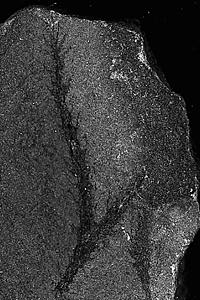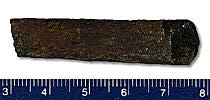 The Protolepidodendrales are a group of mostly small herbs known from the
Devonian and Mississippian.
As their name suggests, they are lycophytes, related to the giant scale trees of the Carboniferous.
The Protolepidodendrales are a group of mostly small herbs known from the
Devonian and Mississippian.
As their name suggests, they are lycophytes, related to the giant scale trees of the Carboniferous.
 The Protolepidodendrales are a group of mostly small herbs known from the
Devonian and Mississippian.
As their name suggests, they are lycophytes, related to the giant scale trees of the Carboniferous.
The Protolepidodendrales are a group of mostly small herbs known from the
Devonian and Mississippian.
As their name suggests, they are lycophytes, related to the giant scale trees of the Carboniferous.
Unlike all other lycophytes however, the Protolepidodendrales bore leaves which were forked at the tips. A few are believed to have had multiple sprorangia on each fertile leaf, such as the genus Estinnophyton, though there are some who suggest that this plant is actually a trimerophyte.
At left, you can see a picture of Archaeosigillaria vanuxemi, from the Middle Devonian of New York. The image has had its contrast boosted to improve visibility of the fine leaves; click on the image for a larger version.
The best known protolepidodendrid is Leclercqia, a plant which is known to have grown to at least a half-meter tall. The leaves of this plant are unusual in that each tiny leaf bore two forked appendages to either side. The preservation of some of these leaves is sufficiently good to reveal the presence of ligules, tiny flaps of tissue known in some but not all lycophytes. These ligules suggest that the Protolepidodendrales are close relatives of Lepidodendrales, Selaginellales, and Isoetales, all of which have ligules as well. Leclerquia complexa is the earliest known lycophyte with ligules.
Protolepidodendrales fossils are known from North America, Europe, China, and Australia by the Middle Devonian, suggesting that they originated earlier. By the middle of the Carboniferous, they were extinct.
 |
Protolepidodendron stem: Protolepidodendron specimen from the Upper Devonian of New York, with centimeter scale. Stems assigned to the Protolepidodendrales range from 0.3 to 3.0 cm in diameter. |

Thomas N. Taylor & Edith L. Taylor. 1993. The Biology and Evolution of Fossil Plants. Prentice Hall, New Jersey, USA.

